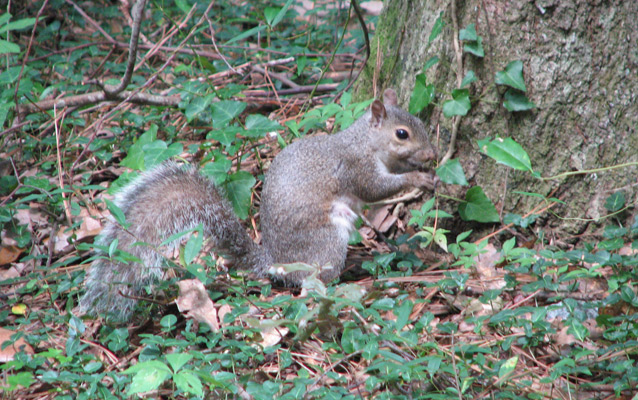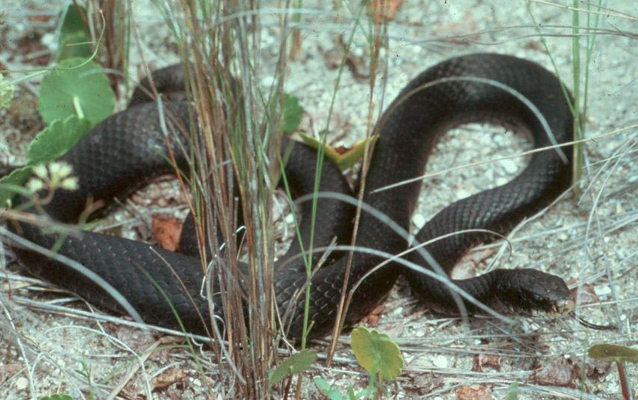
National Park Service
While exploring Fort Raleigh National Historic Site, you may have a chance to see some of our local wildlife. Please, as always, be a respectful visitor and do not approach any wildlife.
Common animals in the evergreen maritime forest of Fort Raleigh include songbirds such as cardinals (Cardinalis cardinalis), bluebirds (Sialia sialis), robins (Erithacus rubecula), and blue jays (Cyanocitta cristata).
Keep an eye out for one of our most common animals, the Eastern grey squirrel (Sciurus carolinensis).

National Park Service
Explore the Thomas Hariot nature trail toward the Albemarle Sound and you may see waterfowl such as brown pelicans (Pelecanus occidentalis), several species of gulls (family: Laridae ), and the American white ibis (Eudocimus albus). Also occasionally seen near the shore are osprey (Pandion haliaetus) and bald eagles (Haliaeetus leucocephalus).
If your visit coincides with bird migratory patterns, you may see many more species of land birds and shore birds on their way to or from their winter habitats. Thousands of migratory birds pass over the Outer Banks at one time or another on their journey.

National Park Service
Back under the tree canopy, visitors with sharp eyes may spot one or more of our resident lizards, the Southeastern five lined skink (Eumeces inexpectatus), broadhead skink (Plestiodon laticeps), and Carolina or green anole (Anolis carolinensis). Other park reptiles and amphibians include the Eastern box turtle (Terrapene Carolina) and the American toad (Anaxyrus americanus).

National Park Service
Visitors may occasionally see a snake in the park; most are non-venomous and include the black racer (Coluber constrictor), corn snake (Elaphe guttata), rainbow snake (Farancia erytrogramma), milksnake (Lampropeltis triangulum, and Eastern hognose snake (Heterodon platirhinos). There are a few species of venomous snakes in the park but they are not often seen. Venomous snakes include the cottonmouth (Agkistrodon piscivorus), canebrake or timber rattlesnake (Crotalus horridus), and copperhead (Agkistrodon contortrix). Again, do not approach wildlife and please heed any alert or warning signs you may see in any national park.

National Park Service
Insects and arachnids also help make up the diverse ecosystem at Fort Raleigh. While they play an important role, their presence neccesitates caution. Please be aware of mosquitos (family: Culicidae), a variety of species of ticks, black widow spiders (Latrodectus mactans), and brown recluse spiders (Loxosceles reclusa). Wear bug spray, long pants, closed toe shoes, and stay on the marked paths and trails to lessen contact with these creatures.
Last updated: September 27, 2016
